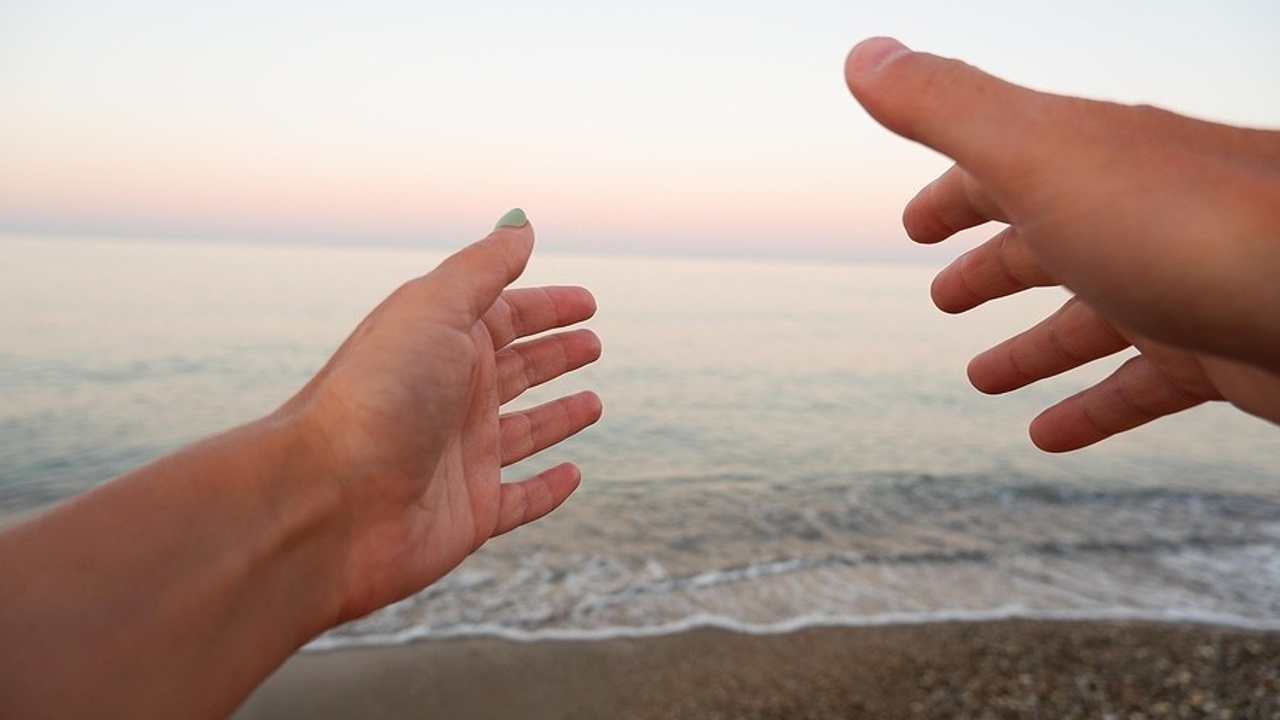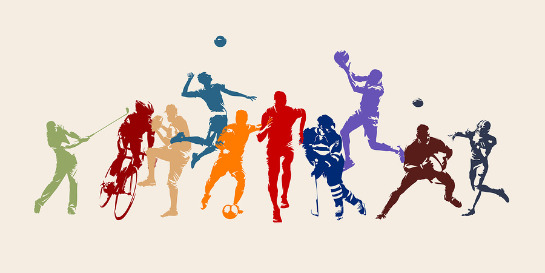How to Reach to Relieve Neck and Shoulder Pain
Mar 09, 2021
As humans we are often reaching directly in front of our bodies to do tasks with our hands. For instance, we type and use a mouse on our computers; chop, cook and clean in the kitchen; text on our phones; eat our meals; and much, much more. But have you ever considered that how you reach for things could be contributing to your neck and shoulder pain?
Two Ways to Reach
1. "Up and Over"
 As an example, let’s take a look at how I reach for my herbal tea in the microwave. In this first picture, you can see that my shoulder is raised up toward my ear. My client coined this as the “up and over” technique of reaching for something. With this move, I am engaging the muscles on the top of my shoulder and neck to lift my shoulder blade (scapulae) up. Then, I tilt it forward to reach my cup. This movement shortens and tightens these muscles. Perhaps this contributes to my chronic tension in these areas. Do you feel that, too?
As an example, let’s take a look at how I reach for my herbal tea in the microwave. In this first picture, you can see that my shoulder is raised up toward my ear. My client coined this as the “up and over” technique of reaching for something. With this move, I am engaging the muscles on the top of my shoulder and neck to lift my shoulder blade (scapulae) up. Then, I tilt it forward to reach my cup. This movement shortens and tightens these muscles. Perhaps this contributes to my chronic tension in these areas. Do you feel that, too?2. "Down and Under"
In contrast to the “up and over” technique of reaching is the “down and under” strategy. To illustrate, look at the second picture. Here, you can see that my shoulder is kept down, and I am reaching from my back. Instead of lifting the scapulae up and tilting it forward, I am moving my shoulder blade sideways, away from my spine, in order to create the length I need to reach my cup of tea.
the “up and over” technique of reaching is the “down and under” strategy. To illustrate, look at the second picture. Here, you can see that my shoulder is kept down, and I am reaching from my back. Instead of lifting the scapulae up and tilting it forward, I am moving my shoulder blade sideways, away from my spine, in order to create the length I need to reach my cup of tea.
By showing you these examples, I want to emphasize something. Although the differences between these two techniques may seem insignificant with minor consequences, the repeated engagement of the muscles in your shoulder and neck are cumulative throughout the day. To explain, imagine that every time you reach for something, potentially 100s of times a day, you engage these muscles. If you’re doing it wrong, this will lead to more and more tension and, eventually, pain.
Relieve Neck and Shoulder Pain Through Correct Reaching
To elaborate on the examples given above, the “up and over” technique increases the strain on the neck and shoulders, while the “down and under” strategy keeps these muscles long and relaxed. What follows is an exercise to teach you how to reach from your back. I chose this exercise because it closely mimics reaching forward, our most common reach. However, you can apply this idea to reaching in all directions. Read on!
Practice Reaching with Elbow Curls
This is an Egoscue Method© exercise. In this exercise, you are reaching forward with your elbows. The shorter lever—shoulder to elbow rather than shoulder to hand—used in this movement makes it easier to focus on and feel the lateral movement of the shoulder blades. The blades start near the spine and move sideways, wrapping around the rib cage toward the front of the body. This is the “down and under” reaching strategy.
 This exercise can be done standing (same set-up as above), sitting, kneeling, or reclining on your back on the floor in the hooklying position (knees bent at 90 degrees, feet flat on the floor and arms out to your sides with your palms up). I prefer standing against a wall or lying on the floor so that you can receive feedback from the surface behind you on your position.
This exercise can be done standing (same set-up as above), sitting, kneeling, or reclining on your back on the floor in the hooklying position (knees bent at 90 degrees, feet flat on the floor and arms out to your sides with your palms up). I prefer standing against a wall or lying on the floor so that you can receive feedback from the surface behind you on your position.- First, curl your fingers into the palms of your hands. This engages your forearm muscles, helping to lock out your wrists. Keep in mind that you want to keep your wrists straight as you do this exercise.
- Then, bring your knuckles up to the sides of your head, and press the knuckle of your middle finger lightly into your temple.
- Press your shoulders down while subsequently checking that you haven’t lifted your chest or arched your lower back. Whenever we lift the arms up, the shoulders and chest tend to follow.
 Now, exhale out your mouth as you slowly bring your elbows toward each other. Feel the scapulae move sideways out from the spine and wrap around your rib cage. You may or may not be able to touch your elbows. Keep your upper arms parallel to the floor without dropping down.
Now, exhale out your mouth as you slowly bring your elbows toward each other. Feel the scapulae move sideways out from the spine and wrap around your rib cage. You may or may not be able to touch your elbows. Keep your upper arms parallel to the floor without dropping down.- Next, inhale through your nose and open your elbows outward, feeling them move back toward the spine.
- Keep your thumbs pointing down throughout the exercise. There is a tendency for the knuckles to twist as you move, so make sure that isn’t happening. Do this in front of a mirror to check your form.
- Repeat 10-30 repetitions.
Nearly All Athletes Reach with Sports Movements
In addition to reaching during our everyday activities, we also reach when playing sports. Take a look at these athletes.

- Cyclists reach toward their handlebars.
- Golfers, hockey players and athletes of other sports (not pictured) that use a club, stick, pole, bat or racquet such as pickleball, baseball, cricket, tennis or skiing reach with the object in their hand.
- Volleyball, football, rugby and basketball players reach to throw, hit or catch a ball.
- Paddlers and swimmers (not pictured) reach forward to move through the water.
- Rock climbers (not pictured) repeatedly reach for holds to move up the route.
- Runners reach forward and back as they stride.
Conclusion
Reaching is such a common movement that our technique has become automatic. Yet how we reach can greatly impact our bodies, particularly the tension and pain on the top of our shoulders and into our neck. Clearly, we reach not just in activities of daily living but also during sport. So, when we reach repetitively with poor technique, we can cause tightness in our upper body, which, over time, can result in pain. The elbow curl exercise is one way to retrain your body in how to reach from your back by moving your scapulae sideways instead of lifting the shoulder blade up with your neck and shoulder. In order to combat this issue, practice this movement often and apply it to how you reach for things, not just directly in front of you but also when reaching for items at your side, above your head and at your feet. In other words, reach right, and your neck and shoulders will thank you.
Stay connected with news and updates!
Join our mailing list to receive the latest news and updates from me.
Don't worry, your information will not be shared.
We hate SPAM. We will never sell your information, for any reason.

